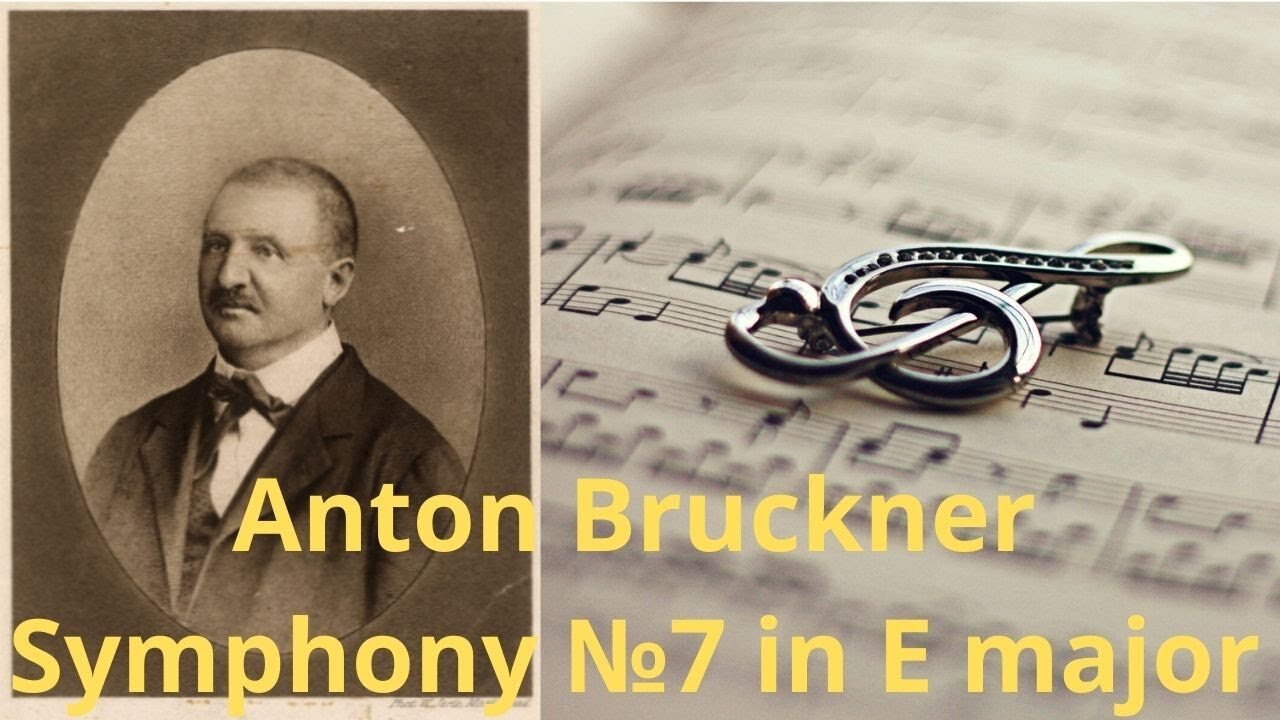Premium Only Content

Anton Bruckner Symphony №7 in E major
Anton Bruckner's Symphony No. 7 in E major is a masterpiece of the Romantic era, showcasing Bruckner's exceptional skill as a composer and his unique approach to orchestration. Composed in the late 19th century, the symphony is known for its sweeping melodies, grandiose structures, and powerful emotional impact.
The symphony is structured in four movements, each building on the themes and motifs introduced in the previous movement. The first movement begins with a majestic brass fanfare, leading into a complex and harmonically rich exposition. The second movement is a somber and introspective adagio, featuring a beautiful melody played by the strings. The third movement is a lively scherzo, with a rhythmic and playful melody. The fourth and final movement is a triumphant and powerful conclusion, with a grandiose theme played by the full orchestra.
Bruckner's use of orchestration in Symphony No. 7 is particularly noteworthy, with the composer skillfully weaving together different instrumental sections to create a rich and varied tapestry of sound. The use of brass and percussion is especially prominent, with the brass section often playing a leading role in the music's climactic moments.
Symphony No. 7 in E major is considered one of Bruckner's greatest works, and has been recorded and performed by many of the world's leading orchestras and conductors. Its enduring popularity can be attributed to its powerful emotional impact, its intricate and complex structure, and its beautiful melodies and harmonies.
If you are a fan of Romantic-era music, or simply looking to expand your musical horizons, Symphony No. 7 in E major is a must-listen piece. Its grandiose structures, powerful emotional impact, and skillful orchestration make it a timeless masterpiece of classical music.
-
 24:30
24:30
Classical music_Music Inspiration
1 month agoFranz Schubert Grand Duet for Piano Four Hands, Op. 140
731 -
 1:01:39
1:01:39
Steven Crowder
3 hours agoAbu Dhabi Disney, Confused AI and Other Jokes That Should Never Make Air
88.4K39 -
 LIVE
LIVE
The White House
1 hour agoPresident Trump Participates in a Bill Signing Ceremony, June 12, 2025
2,296 watching -
 LIVE
LIVE
Akademiks
1 hour agoDiddy Trial Day 22: Jane Doe aka 50 Cent Baby Moms Cross Examine. ALLSTAR FREEKOFF Day 4/30
2,322 watching -
 UPCOMING
UPCOMING
Flyover Conservatives
11 hours agoDiscussion with Dr Robert Malone - Helping Americans Navigate The Psyop Waged Against Their Health | FOC Show
3.88K -
 LIVE
LIVE
LFA TV
12 hours agoLFA TV ALL DAY STREAM - THURSDAY 6/12/25
4,996 watching -
 LIVE
LIVE
Due Dissidence
2 hours agoIsrael PREPS IRAN STRIKE, Trump Hypes BIG Army Parade, SD Pride SUPPORTS Pro-Palestine Singer
467 watching -
 LIVE
LIVE
The Mel K Show
1 hour agoMORNINGS WITH MEL K - Stop the Insanity! If We Do Not Stand for Our Constitution & Bill of Rights We Will Lose Both! 6/12/25
562 watching -
 LIVE
LIVE
NEWSMAX
3 hours agoThe Rob Carson Show LIVE (06/12/2025) | NEWSMAX Podcasts
235 watching -
 53:52
53:52
The Rubin Report
1 hour agoPress Gasps When Told Trump’s Brutal Plan for Sanctuary Cities
10.6K28